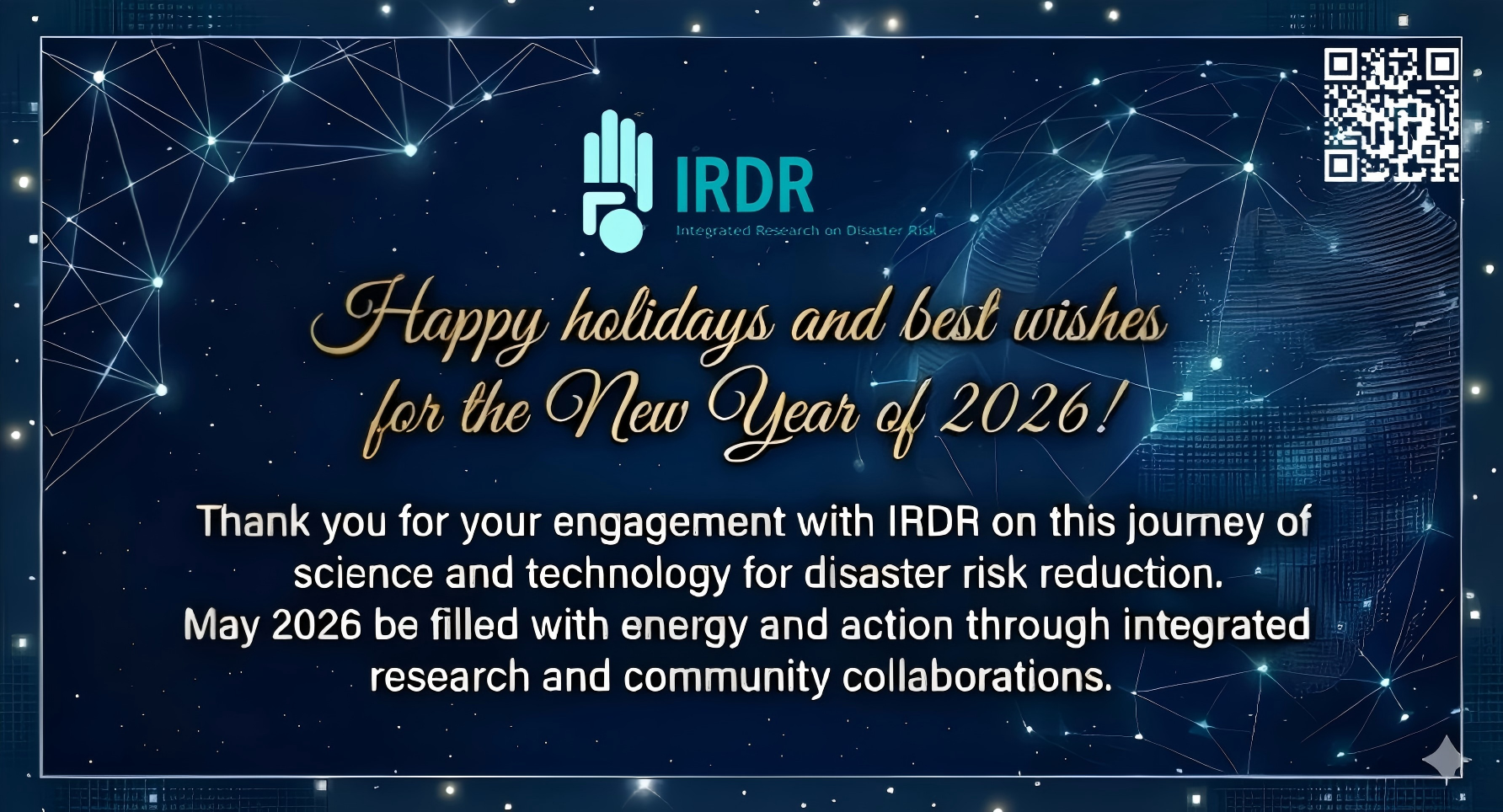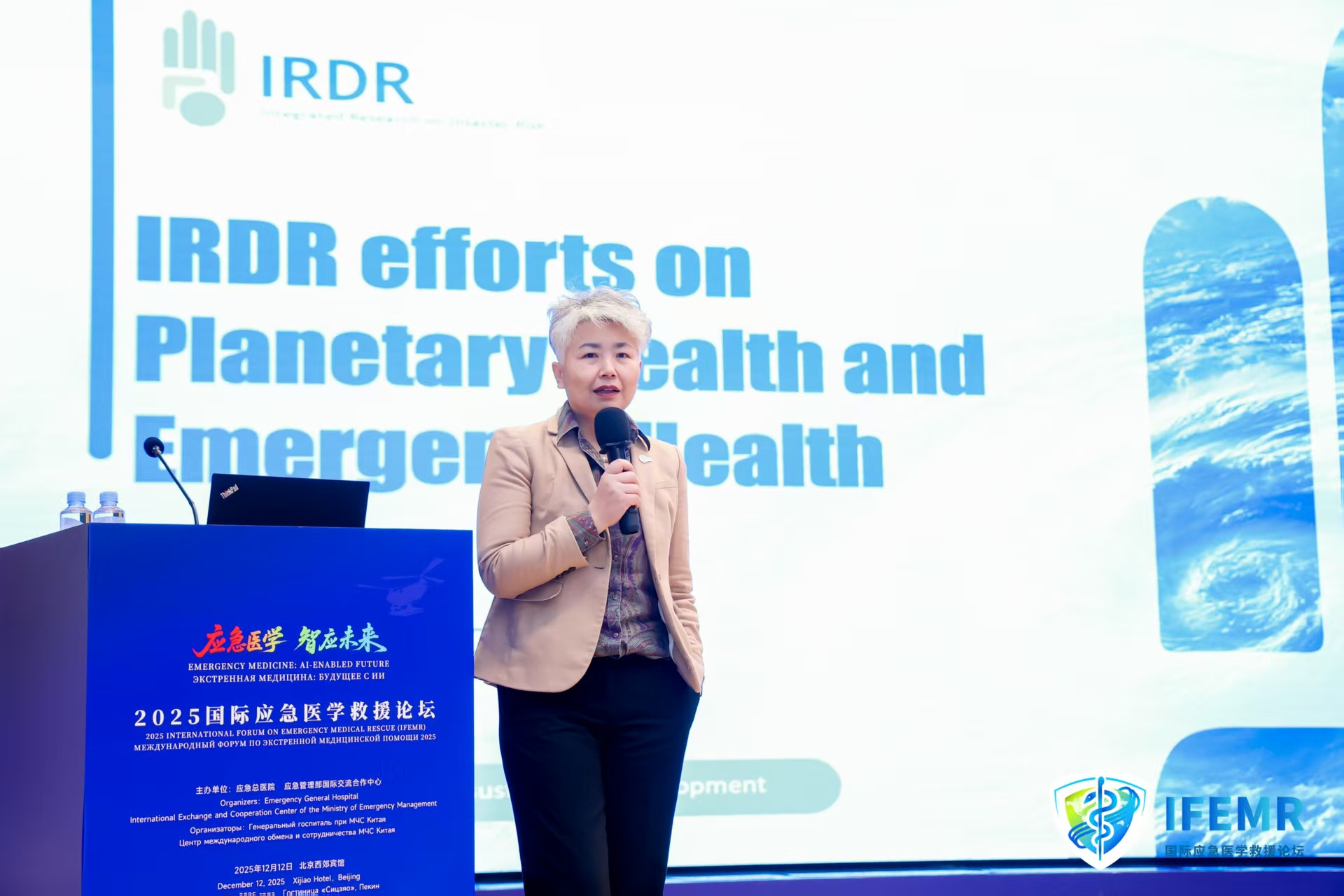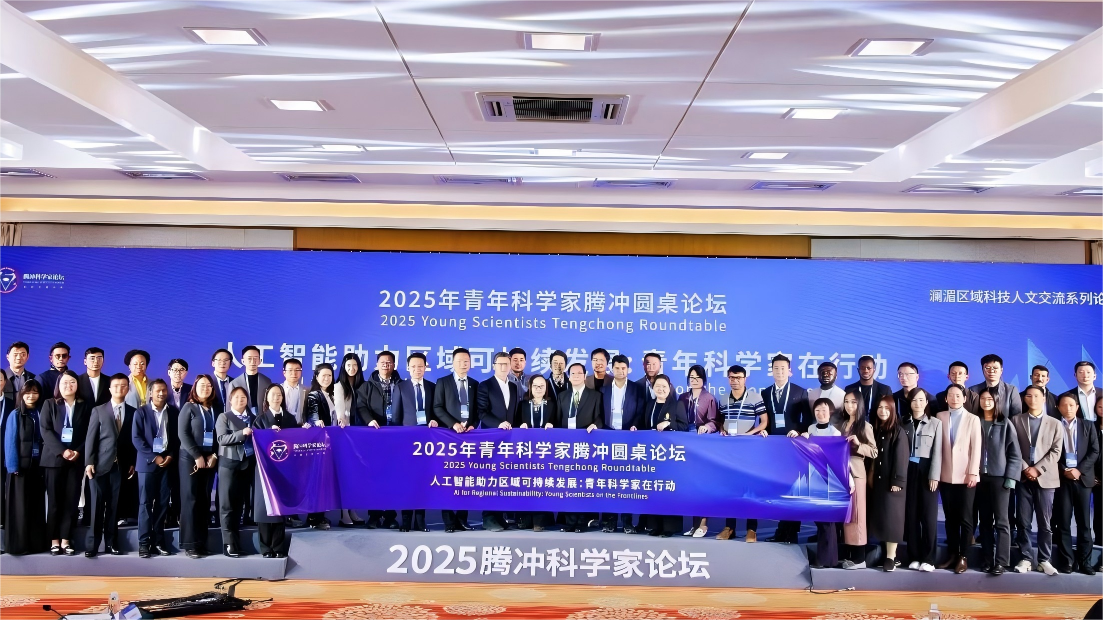BEIJING – Philippine legislator, Senator Loren LEGARDA gave the Keynote Speech at the opening ceremony of the IRDR Conference 2014 in Beijing today. In her speech, LEGARDA shared stories on how the second largest volcanic eruption in the Philippines and the effects of Mt. Pinatubo’s eruption, were felt worldwide. Global temperatures dropped by about 0.5 °C and 10 cubic kilometers of rock and ash were generated by the eruption, enough to bury the District of Columbia to a depth of 128 feet.
 LEGARDA further shared the lessons from “Haiyan”, the world’s strongest typhoon to make landfall in the Philippines recently. The first lesson from “Haiyan” focused on managing the risks rather than managing disasters. LEGARDA said that disaster risk management should not be carried out only immediately before calamities happen and local government units need to be at the forefront of the planning, preparations, and execution of the plans and measures.
LEGARDA further shared the lessons from “Haiyan”, the world’s strongest typhoon to make landfall in the Philippines recently. The first lesson from “Haiyan” focused on managing the risks rather than managing disasters. LEGARDA said that disaster risk management should not be carried out only immediately before calamities happen and local government units need to be at the forefront of the planning, preparations, and execution of the plans and measures.
LEGARDA also emphasized the need for science to work for our communities and that the best solutions are possible only with the guidance of science. Hazard maps can provide a good foundation for the work of our planners and builders. However, the greater challenge is to translate knowledge into practice. Governments, local leaders and the people on the ground should understand the vulnerability of their communities and be equipped with options, resources, and the tools to enable them to become drivers of action.
On her speech, LEGARDA further outlined that, “We should all be disaster-literate. Sound policies and political will to implement do not complete the formula for effective disaster prevention. Action needs to come from the communities themselves. Early and mandatory evacuation would be useless if the people do not understand the need for such efforts. Our experience with Haiyan has underscored this fact,” LEGARDA said. She further stressed that citizens should be able to digest the information on a geo-hazard map or a weather bulletin. Raising public awareness should be made to resonate loudly and as far deep into the communities as possible.
Another key lesson from Haiyan stressed the need to protect our environment and pursue green urban development. LEGARDA said that building on good risk reduction practices means going back to the very basics: protecting our ecosystems and using natural buffers such as mangrove forests to mitigate floods, storm surges and other hazards.

Finally, LEGARDA said that we should prepare adequately and engage. “With adequate and proper preparation, we would already have won half the battle. Contingency plans are crucial in times of disasters. Communities must draw and test regularly their response plan way ahead of any disaster event and improve constantly on early warning systems and emergency management capacities,” she added. Quick communication, particularly real-time updates, is also vital in ensuring effective disaster response with first responders and search and rescue teams ready for dispatch anytime.
In 2012, the Philippine government, through the Department of Science and Technology, launched Project NOAH, or the Nationwide Operational Assessment of Hazards. This program uses science and technology in building capacities for disaster risk reduction and management. A website has been built to enable people to see real time updates and accurate information on weather predictions, flood forecasts, rainwater level and landslide warnings. Project NOAH also features the Disaster Risk Exposure Assessment for Mitigation – Light Detection and Ranging or DREAM-LIDAR Project, which seeks to produce accurate flood inundation and 3D hazard maps and seeks to identify landslide-prone areas.
“Tragedies such as Haiyan, the 2011 Japan tsunami and the 2004 Indian Ocean tsunami create the context for learning and growing. It is these disasters that compel action from everyone,” said LEGARDA.
In her closing statement, LEGARDA concluded, “We must not build the risks, we must build stronger and wiser.”
In addition to plenary sessions with presentations from keynote speakers from the world of hazards and disaster risk, there are 20 moderated breakout sessions on offer. Breakout sessions cover subjects as diverse as the Forensic Investigations of Disasters (the FORIN project), through meteorological issues, to communications and the media.





